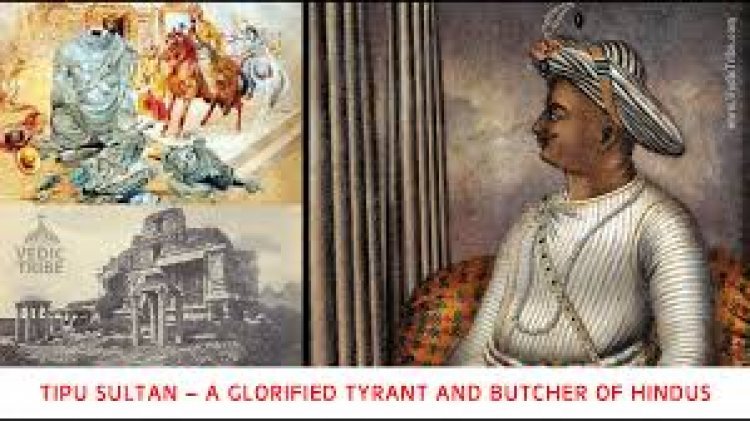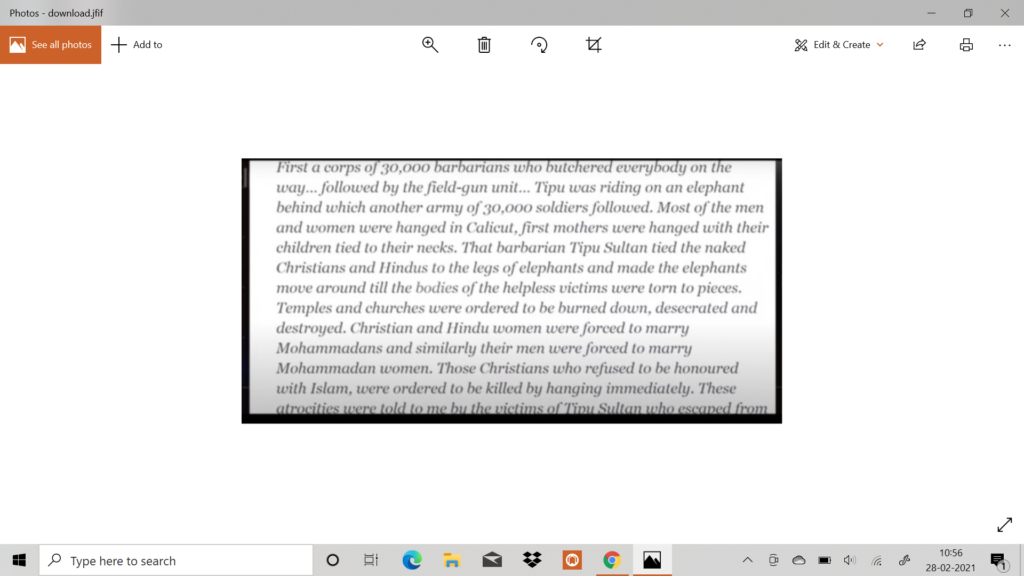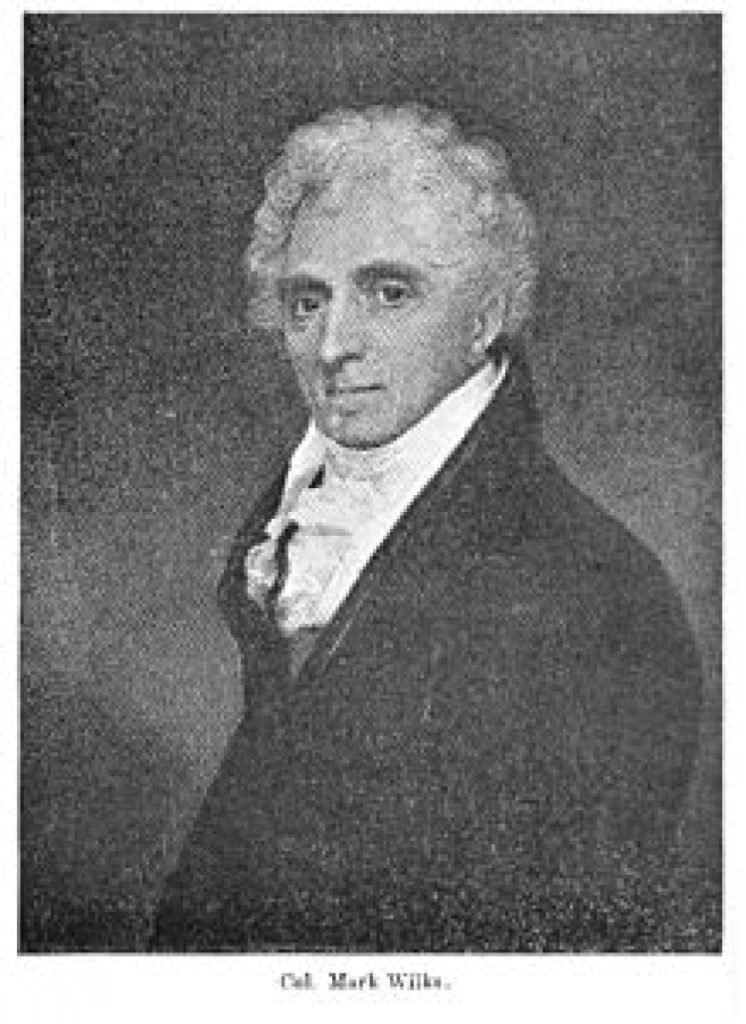Tipu Sultan-Right or Wrong? Horrifying facts



Tipu Sultan persecuted the Hindus, Christians with the Mappila Muslims and carried out forced conversions of Hindus and Christians. According to C. K. Kareem, Tipu Sultan issued an edict for the destruction of Hindu temples in Kerala.
Tipu Sultan’s actions in history are up for debate, and it’s impossible to place him into comfortable modern brackets like ‘secular leader’ or ‘Hindu killer’ or ‘freedom fighter’.
While some consider Tipu a national hero, others paint him as a Hindu-killing king who forced people to convert to Islam. The latter was a view backed by the British, who he fought against after allying with the French.
William Dalrymple in an article of Guardian says it was the British who painted Tipu as a tyrant. He writes: “There was no doubt who would be the first to be targeted: a Muslim dictator whose family had usurped power in a military coup. According to British sources, this chief of state was an “intolerant bigot”, a “furious fanatic” with a “rooted and inveterate hatred of Europeans”, who had “perpetually on his tongue the projects of jihad”. He was also deemed to be “oppressive”.
On 10th November, last year a section of society including congress came out to celebrate Tipu Jayanti and criticized the ruling BJP party in Karnataka for discontinuing the celebration of the “greatest warrior” of India.
According to British Soldier James Scurry who was held captive along with more than 30,000 Mangalorean Catholics were forced to convert to Islam. The young girls and women were forced to become wives of the Muslims residing there at that time. Cutting off ears, nose, and one foot was the form of punishment if someone tried to go against the whims of Sultan as per the Mr.Sliva of Gangolim, a survivor of captivity.
If reports of Gazette of South is to be believed Tipu Sultan allegedly circumcised more than 30,000 Christians and deported them to Mysore. He converted Hindus as well and forced them to eat beef as well.

This was Tipu Sultan’s letter to the Afghan king named Zaman Shah, written somewhere in 1794/95. This letter was part of Tipu’s invitation to Zaman Shah to invade India, and establish the Sword of Islam in the country, and free it from the darkness of the Kafirs.
Brahmins the soft Target
As he proceeded with his Islamic wars against the Hindu population in Kerala, Tipu Sultan committed many more brutalities. The Rajas were unable to resist. But they did not like to be mute witnesses to brutalities perpetrated by the Muslim army of Tipu. As a consequence, the Kadathanad and Kottayam Rajas sent requests to the English Company at Tellicherry for protection, stating that “they could no longer trust Tipu Sultan and beseeching the Company to take the Brahmins, the poor and the whole kingdom under their protections”.But the British did not render any help to the Hindu Rajas. Tipu’s brutalities were against all sections – Brahmins, Nairs, and Thiyyas of the Hindu community, not excluding even women and children. Even Christians were not spared.
“It Was NOT ONLY AGAINST THE BRAHMINS WHO WERE THUS PUT IN A STATE OF TERROR OF FORCIBLE CIRCUMCISION AND CONVERSION; BUT AGAINST ALL SECTIONS OF HINDUS. IN AUGUST 1788, A RAJA OF THE KSHATRIYA FAMILY OF PARAPPANAD AND ALSO TRINCHERA THIRUPPAD, A CHIEFTAIN OF NILAMBOOR, AND MANY OTHER HINDU NOBLES WHO HAD BEEN CARRIED AWAY EARLIER TO COIMBATORE BY TIPU SULTAN, WERE FORCIBLY CIRCUMCISED AND FORCED TO CAT BEEF. NAIRS IN DESPERATION, UNDER THE CIRCUMSTANCES, ROSE UP AGAINST THEIR MUSLIM OPPRESSORS UNDER TIPU’S COMMAND IN SOUTH MALABAR AND THE HINDUS OF COORG IN THE NORTH ALSO JOINED THEM”

IN December 2015, a group of Kodava activists erected a stone memorial at a site called Devatiparambu in a forest some 30 kilometers from Madikeri, the headquarters of Kodagu district, to mark the supposed massacre of Kodavas by Tipu Sultan on December 13, 1785. While the Karnataka Forest Department subsequently dismantled the memorial, resentment against Tipu’s campaigns continues to fester among Kodavas more than 215 years after his passing in 1799.
Kodavas are native to Kodagu, a hilly district that is famed for its coffee plantations and has over the past two decades become a popular tourist destination in the south-west corner of Karnataka along its border with Kerala. Tipu’s attacks in the region in the 18th century find a salient space in the prosperous community’s historical narrative. When the Congress government of Chief Minister Siddaramaiah decided to celebrate the birthday of Tipu as Tipu Jayanti on November 10 in 2015, two people lost their lives in Madikeri in the ensuing disturbances. While no serious disturbance marked Tipu Jayanti in 2016, Kodavas protested vigorously in the days leading up to the event. The Bharatiya Janata Party’s (BJP) support of the protesters over the past two years has galvanized them.
An ethnic cleansing of Kodavas took place when Tipu attacked Coorg [Kodagu] in 1785,” contended N.U. Nachappa, the Madikeri-based president of the Codava National Council (CNC), an organization that has advocated statehood for Kodagu in the past. “The massacre that took place at Devatiparambu can be compared to the Holocaust, and the CNC has written a letter to the French President seeking an apology for the role of French soldiers in this genocide,”
When his generals could not deal with the situation, Tipu himself came to Kodagu (in 1785). Mir Hussain Ali Khan Kirmani, the primary chronicler of his reign, writes in some detail about this campaign as Tipu spent a considerable amount of time in the region. He strengthened the fort in Madikeri during his stay there. Kirmani describes the people and landscape of Kodagu and the various victories that Tipu’s army secured. While there is no description of any massacre, Kirmani states that “in the course of seven months and a few days eighty thousand men, women and children were made prisoners”. He writes: “When the Sultan arrived at Seringapatam, the prisoners taken in the country of Coorg, who had been all made Musalmans and were styled Ahmadees, were formed into eight Risalas or regiments, and veteran officers were appointed to train and discipline them, and they with very little labor having instructed these wild men, soon made them perfect in their military exercises and movements.”
Kirmani’s work constitutes the primary source that Nachappa and Cariappa cite in their discussions about Devatiparambu, but the work itself has no mention of any mass killing. Almost all astute historians of Tipu have used Kirmani’s work with considerable caution. Mohibbul Hasan, whose biography of Tipu remains the most comprehensive work on the king even though it was first published in 1951 while acknowledging that Kirmani knew Tipu and his father, points out: “After the fall of Seringapatam, he [Kirmani] became a pensioner of the English and wrote his work under their patronage in Calcutta. He is, therefore biased in their favor. Besides, his dates are usually wrong.… Furthermore, although his delineation of Tipu’s character is on the whole sympathetic, being himself a fanatic, he represents the Sultan also as a bigot whose every action was determined by his religion, and whose life mission was to spread Islam by the sword.”
His brutality on Coorg went on from 1785 to 1790 and during this tenure, more than 600 temples were plundered and destroyed across Kodagu (Coorg).
DISCLAIMER: The author is solely responsible for the views expressed in this article. The author carries the responsibility for citing and/or licensing of images utilized within the text.
